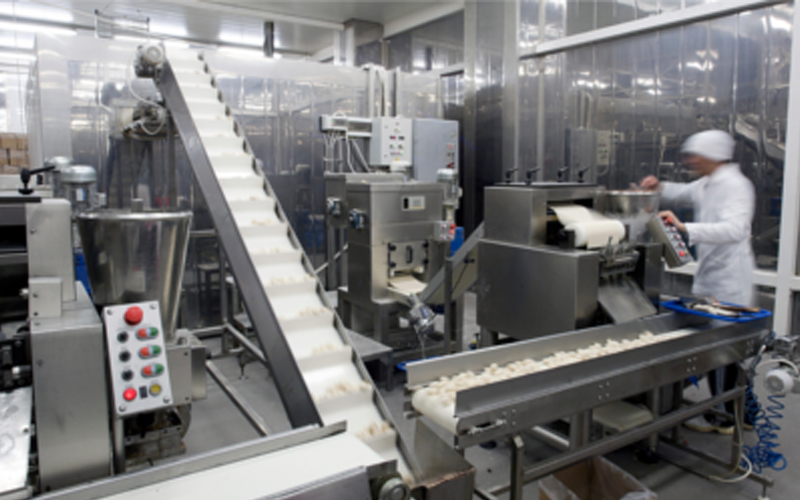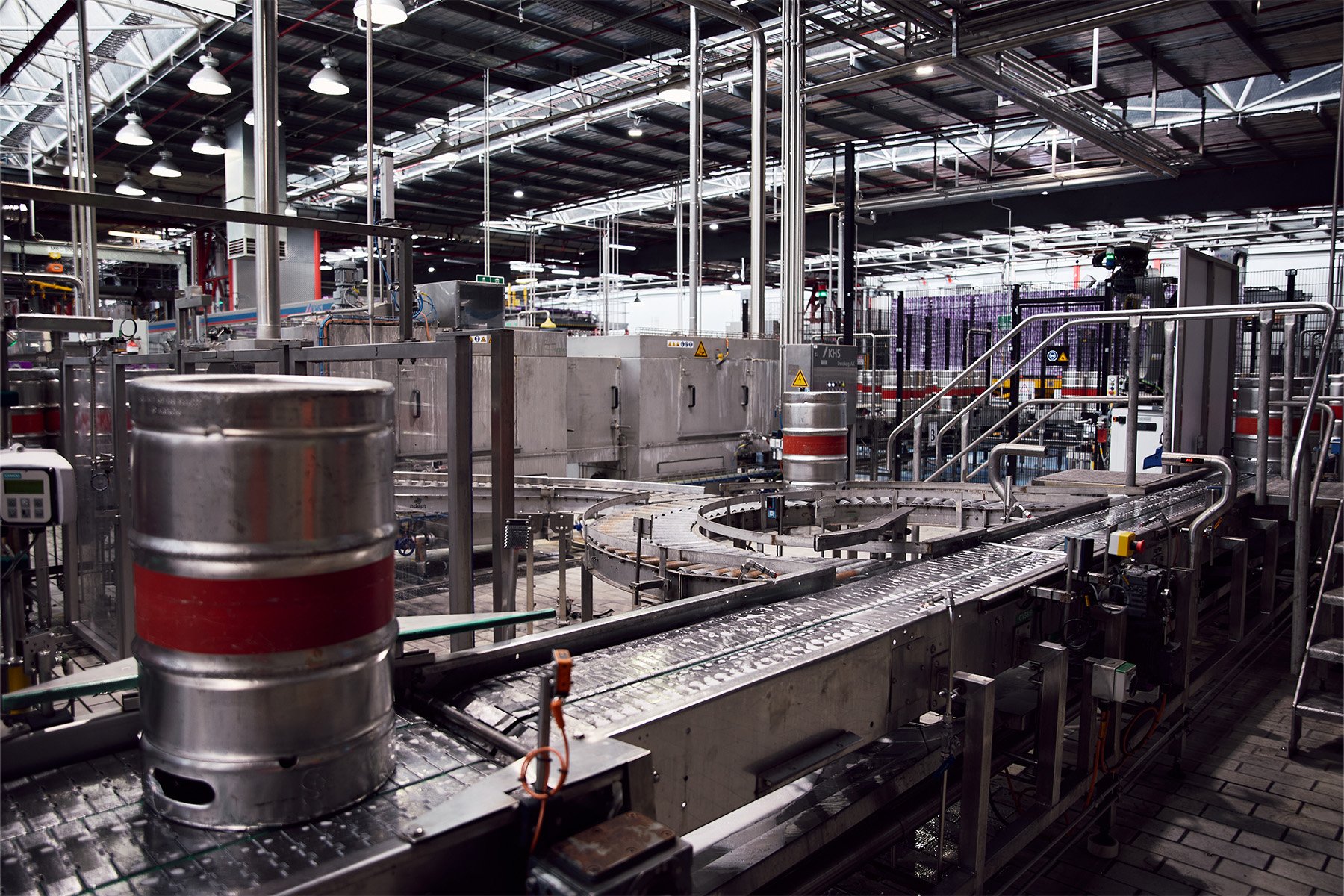Open source software is everywhere. Businesses today have access to thousands of open source software solutions - from enterprise resource planning, finance and accounting and customer relationship management, to e-commerce and communication systems.
The established names in the game include Linux, Mozilla Firefox, Java and Apache, while Camunda and Influx are making major strides in manufacturing.
But does open source software truly have a place in the diverse and highly specialised manufacturing industry? In this blog, we consider the pros and cons of using open source manufacturing software.
Pro: Access to the code = greater control
As manufacturing enters a dynamic new global phase, its ability to continuously improve and evolve is ever important, and the highly collaborative and transparent nature of open source makes it very compatible with this mentality. By definition, software that is ‘open source’ is available to download, install, edit and share, along with its source code, by anyone - meaning it is constantly being adapted.
Proprietary or ‘closed source’ software, on the other hand, is similar to getting a flashy new LEGO spaceship – but the blocks are glued together. You can’t change the underlying structure, nor can you add to or change the end product. You can get new pieces, but you have to wait until they’re released from the developer.
 There are some significant differences between open source and closed source software.
There are some significant differences between open source and closed source software.
By having access to the source code, or the software’s individual building blocks, you can explore the code to understand the product and improve it to suit changing operational needs, such as introducing a new line of products or linking a new customer management system with your resource planning system.
Pro: It’s safer and more reliable
There is a misconception that open source software is prone to failure.
“Mature open-source code is as bulletproof as software ever gets.” – Open Source Initiative.
The reality? Open source software is more reliable because it has been peer-reviewed and heavily scrutinised by developers, coders, users and testers. This means flaws and bugs are more likely to be found and fixed quickly. Open source software licences must also adhere to the Open Source Initiative’s licensing and distribution terms, so it is regulated.
As Linus Torvalds, the creator of the open source software operating system Linux, once said: "Given enough eyeballs, all bugs are shallow."
Pro: It turbo-charges your improvement and growth
In a manufacturing context, giving an in-house developer access to the source code means they can manipulate the code and make changes as needed, rather than having to wait for the vendor to release software updates that may or may not be relevant.
Nukon recently worked with a large supermarket chain that harnessed open source to rapidly grow its new line of business. It used smaller components of an open source software manufacturing execution system (MES) to manage the production of a new meat product. Twelve months on, its operations expanded to produce more than 100 different products and distribute more than 800 tonnes of meat per week to over 600 different stores nationwide. This required the system to evolve and change at the same rate as the business. Planning and scheduling, sales, production and supply chain open source software components were able to be built quickly into the system, all at a fraction of the cost of closed source system/s.
“Open source may not provide the lock-in protection to the owner that proprietary IP does, but the constant innovation and evolution required in operating in open-source environments fosters fast innovation that has now become essential to business success.” — Industry analyst, Al Hilwa.
 An open source MES system for a supermarket enabled rapid growth into a new product area.
An open source MES system for a supermarket enabled rapid growth into a new product area.
Pro: It’s more affordable
Open source software has fewer (if any) licensing fees and there’s no limit on licences, making it incredibly easy for your business to try the software before you invest.
On the other hand, a proprietary MES can be over $100,000 a year — and that’s just for the licence, with upfront support and maintenance costs on top of that. Open source allows you to redirect these funds into making enhancements to your system, giving you a competitive edge.
Con: It’s not all free
While it is initially cheaper, open source software still has implementation, support and growth costs.
The open source strategy is about enabling constant evolution and improvements – and these development costs must be factored in. Saying this, funds redirected from proprietary licences will likely more than cover these.
Pro: You have access to lightning-speed, reliable support
This might seem counter-intuitive, but the level of support offered by the open source community is often seen as better than what proprietary applications can offer.
If you're using an open source component that has a network of 10,000 users, you can usually reach out to that network with a question and get a response within an hour or so. Because of this transparency, developers are highly responsive, and bugs and issues can be found and fixed quickly.
In comparison, lengthy support ticket processes with proprietary software licenses can take weeks or even months to resolve. In addition, closed software vendors may not release new updates until a few months down the line.
Con: No one’s obliged to help
While the open source community is good at responding to issues quickly, no one is legally obligated to help you. That being said, most open source software applications do offer support and maintenance services – at a cost.
In most cases, however, open source developers will address problems because they have a vested interest in seeing their software succeed.
Pro: It puts you in the driving seat
In the words of Spiderman’s uncle, “With great power comes great responsibility.” This is especially true for open source software.
Traditionally, the manufacturing sector has left software implementation and upkeep to their vendors. But an increasing number of companies have realised that outsourcing this responsibility doesn’t really work because no closed source software is going to fulfil every single one of their needs. They understand being able to tailor software to their requirements gives them a competitive advantage, especially as we move into information technology (IT) and operational technology (OT) integration, data analytics and the Internet of Things (IoT).
Pro: It allows for far more powerful integration
Software developers understand the need for manufacturers to integrate OT and IT systems to gain business-wide insights. That is why newer software is designed with the ‘architecture’ needed to easily integrate it with other applications and systems. And open source is leading the way.
One company reported that its open source manufacturing ERP system integrates and automates:
- Planning and scheduling
- Production control
- Cost management
- Reporting across discrete manufacturing operations.
Plus its analysis and reporting tools have given them visibility into production costs and opportunities for improvements
This level of integration is harder to achieve with proprietary software because you’re often limited to using their suite of solutions, which may be both cost-prohibitive and not the right fit.
Con: The potential for orphaned software is greater
Open source manufacturing software products are owned or maintained by their developer/s. There’s a chance that these owners can move off the project and officially ‘orphan’ the software. Then again, any product or service on the market today could be discontinued or dropped by a defunct company.
How do you mitigate this risk? Make sure you're ‘compartmentalising’ your solution by using a range of software applications. Then you can unplug an orphaned app or component and plug in a new component quite easily.

Future-proofing your systems: staff need to 'own' all software products.
Con: There’s a big learning curve for company and staff
Open source manufacturing software such as an MES can allow for customisation, but, as a result, more specialised training may be needed. IT staff or an external integration partner should thoroughly understand your suite of applications and their code and know how they interact with the hardware and other systems. This will ensure the system's longevity, security, and ability to grow to suit changing operational requirements – for example, you may want to integrate a component that increases the visibility of machine sensor data for better decision-making.
The ability to take ownership of the system as a whole will demand resourcing and long-term investment in a digital transformation strategy for the organisation.
Pro: You can leverage untapped IoT technologies
Open source is driving some major IoT initiatives that have an immediate impact on manufacturing. One noteworthy initiative is the new Linux Foundation open source project called EdgeX Foundry, which will provide an open framework for edge computing. This is widely seen as the answer to gaining localised real-time data for decision-making in manufacturing systems from the factory floor to business-wide operations.
“Businesses currently have to invest a lot of time and energy into developing their own edge computing solutions before they can even deploy IoT solutions to address business challenges,” Philip DesAutels of The Linux Foundation and EdgeX Foundry said.
“EdgeX will foster an ecosystem of interoperable components from a variety of vendors so that resources can be spent on driving business value instead of combining and integrating IoT components.”
Microsoft Azure and Amazon Web Services are other IoT platforms that handle connectivity between devices and cloud storage. Both their own proprietary applications and open source applications can be plugged in to achieve a customised system approach.
Proprietary software can be limiting if they haven’t got the ability to get into that ‘ecosystem of components’ arena.
Pro: You can mix-n-match open source and proprietary components
One of the biggest benefits of exploring open source is this: you’ve got the ability to select the best open source and proprietary applications to suit your production needs. The two can work in tandem. For example, you could pair an off-the-shelf enterprise resource planning (ERP) with a custom, open source MES. This allows you to enhance your system using the best products on market.
The benefits of a mix-n-match approach include:
- Choice: There’s an enormous marketplace for applications that build into ERP systems and other open source manufacturing software
- Easy integration: Open source components are designed to ‘fit together', so they can be simply integrated with your current proprietary system
- Lower risk: The ‘all your eggs in one basket’ mentality is erased
- Flexibility: You can explore all options
- Customise and build at your pace: It’s possible to get a lightweight, customised and integrated system through small, segmented installations using a variety of products on the market
Security is still a major concern
As open (and closed) source software development moves towards integrative cloud-based systems that harness IoT capabilities, the risks surrounding IoT’s high degree of connectivity between hardware, software and infrastructure will only increase. Cybersecurity is the number-one concern in this space.
So, no matter what software you choose, a solid security framework should be part of any sound IT system to secure future growth and mitigate associated risk.
Open source software is key to future-proofing operations
As competition in the industry intensifies, success will, more than ever, rely on the speed and reliability of data, analytics and other IoT technologies. Open source software is already playing a starring role in this space.
Finding the best blend of proprietary and open source software will be a key part of ensuring business competitiveness in this space for the next 5–10 years and beyond.
Achieving integration across manufacturing operations software can increase production and business performance across the board. To understand the opportunities and risks of such a project, download our free eBook: The opportunities and risks of integrating IT and OT manufacturing systems. 




